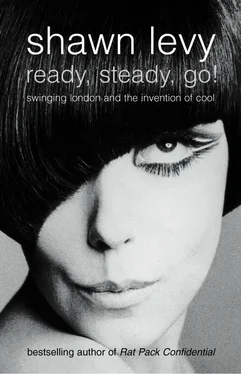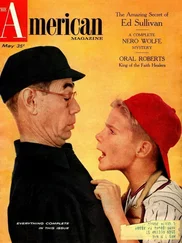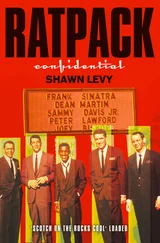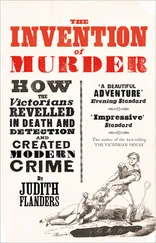Yet for all the sweep of history and the pop artifacts and the indescribable meteorology of human taste, attitude and passion, Swinging London was built of individuals. People became icons because they did something first and uniquely. Everybody overlapped and partied together and slept and turned on and played at being geniuses together, but a few stood out and even symbolised the times – eminent Swinging Londoners, wearing their era like skin.
It would be possible, in fact, to explain the age by telling their stories.
David Bailey was one of the first on the scene, an East End stirrer and mixer and the most famous of the new breed of fashion photographers, who helped revolutionise the glossy magazines and popularise the new hairstyles, clothing and demeanour.
Vidal Sassoon, also from an East End background, but Jewish and, amazingly, a real warrior, who freed women from sitting under hairdryers and ascended into an unimaginable ether: flying to Hollywood to cut starlets’ hair and branding himself into an international trademark.
Mary Quant took a Peter Pan-ish impulse not to grow up and sicced her craft, inspiration and diligence on it, creating a new kind of women’s fashion that spoke to the rapidly expanding notions of what it meant to be cool, free and young.
Terence Stamp, another one from the stereotypical Cockney poverty, wound up winning acting prizes, with his face on magazine covers, the most beautiful women in the world on his arm and a home among peers and prime ministers in the most prestigious part of London – and then wandered out the back door of the decade into spiritual quest.
Brian Epstein failed miserably at everything until he helped create the greatest entertainment sensation of the century while warring internally against the self-doubts he’d borne his whole life.
Mick Jagger, a suburban boy with a bourgeois upbringing, could mimic whatever he wished: black American music, the stage manner of raunchy female performers, the go-go mentality of rising pop bands, the chic manners of slumming aristocrats, and the arcane sexual and narcotic practices of bohemians both native and exotic – a quiver of cannily selected arrows that let him survive the decade unscathed while the road behind him was littered with the corpses of friends.
Robert Fraser, who had every tool that traditional English life could offer a man – birth, schooling, military appointment, connections, polish, bearing – was cursed with a restless imagination and a decadent streak that led him into art-dealing and sensational living that brought him down.
Lay these lives alongside one another, bang them together, hold them up to the light, and you could open an entire time.
You could see how people lived and rose and changed and stumbled and faded or kept on rising until they disappeared into the sun.
You could see how people made a glory of their day or their days into a glorious apotheosis of themselves.
You could hear the music, feel the energy, see the Paisley and the op art and the melting, swirling colours.
You could go back to Swinging London.
II
The story of David Bailey’s early life and career would come to sound a cliché: scruffy working-class boy aspires to a field normally reserved for the posh and sets the world on its ear without bending his personality to fit the long-established model. But like the jokes in Shakespeare or the Marx Brothers, it was only familiar because it was repeated so often from the original. All the pop stars, actors, dressmakers, haircutters, club owners, scenesters, satirists and boy tycoons who exploded on the London scene in the early ‘60s did so after Bailey, often in his mould and almost always in front of his camera.
Before Mod and the Beat Boom, before Carnaby Street and the swinging hotspots of Soho and Chelsea, before, indeed, sex and drugs and most of rock ‘n’ roll, there were the laddish young photographers from the East: Bailey, Brian Duffy and Terence Donovan – ‘The Terrible Three’, in the affectionate phrase of Cecil Beaton, an iconoclastic snapper of another age whose approval of the new lot made it that much easier for them to barge in on what had been a very exclusive and sedate party.
The trio – and a few others who came along in the rush – dressed and spoke and carried on as no important photographers ever had, not even in the putatively wide-open worlds of fashion magazines and photojournalism. They spoke like smart alecks and ruffians, they flaunted their high salaries and the Rolls-Royces they flashed around in, they slept with the beautiful women who modelled for them, they employed new cameras and technologies to break fertile ground in portraiture and fashion shoots. They were superstars from a world that had previously been invisible, perhaps with reason. ‘Before ‘60,’ Duffy famously said, ‘a fashion photographer was somebody tall, thin and camp. But we three are different: short, fat and heterosexual.’
Duffy could enjoy such self-deprecating boasts because, recalled Dick Fontaine, who tried to make a documentary about the trio, ‘He was really the kind of architect of the guerrilla warfare on those who control the fashion industry and the press.’
But it was Bailey who would bring the group their fame and glory. Bailey was the first bright shiny star of the ‘60s – a subject of jealous gossip, an inspiration in fashion, speech and behaviour, an exemplar of getting ahead in a glamorous world and, incidentally, the great, lasting chronicler of his day.
David Bailey was born on 2 January 1938 in Leytonstone, east of the East End, a block over, he always liked to brag, from the street where Alfred Hitchcock was born. When Bailey was three, the family home took a hit from a Nazi bomb, and they relocated to Heigham Road, East Ham, where Bailey and his younger sister, Thelma, were raised.
Their father, Herbert, was a tailor’s cutter and a flash character who dressed nattily, ran around on his wife and liked to have a roll of fivers to hand; his wife, Gladys, kept house but also worked as a machinist, especially after Bert finally left her. The family wasn’t rich, but they were comfortable – they were among the first people in their street to have a telephone and TV set, and Bailey was made to dress smartly, to his chagrin ('What chance have you got in a punch-up in East Ham wearing sandals?’ he later sighed). But they weren’t entirely free of money worries, and one of their ways of dealing with them was, to Bailey, a blessing: ‘In the winter,’ he recalled, the family ‘would take bread-and-jam sandwiches and go to the cinema every night because in those days it was cheaper to go to the cinema than to put on the gas fire. I’ll bet I saw seven or eight movies a week.’
Bailey fell, predictably enough, under the spell of rugged (and mainly American) actors at around the same time that his parents’ marriage was foundering. But Bert Bailey was nonetheless a little worried about his son’s fancy for birdwatching and natural history, which loves led the boy into vegetarianism. ‘My father thought I was fucking queer,’ Bailey said, ‘but queer didn’t mean homosexual. In those days it just meant a bit of an oddball.’
Part of Bailey’s ‘queerness’ was taking and developing photos of birds – he preferred the latter process, as it involved playing with chemicals. Even so he didn’t think of taking pictures as a career ambition – ‘photography was something you did once a year on Margate beach’—and he had enough on his hands at school, where his learning disabilities (undiagnosed at the time) made for a hellish routine. ‘I can’t read and write,’ Bailey said. ‘Dysgraphia, dyslexia – I’ve got them all. I went to the silly class – the school for idiots – and they used to cane me when I couldn’t spell. It was quite tough knowing that you’re smart and thinking you’re an idiot.’
Читать дальше












